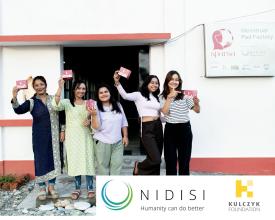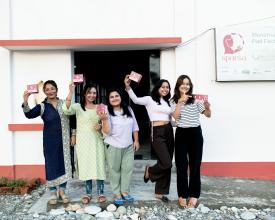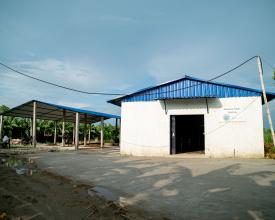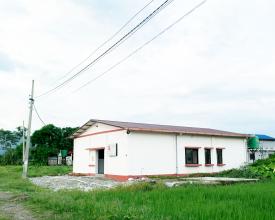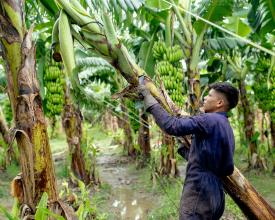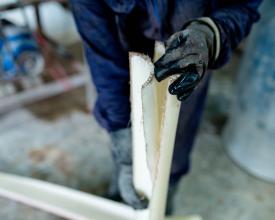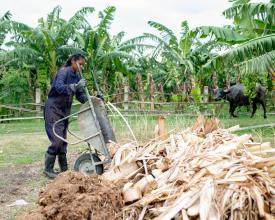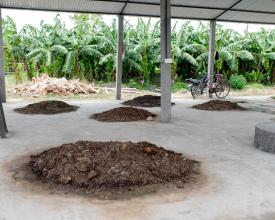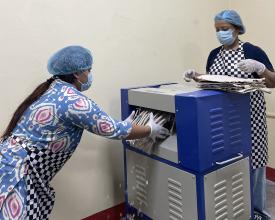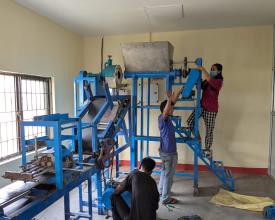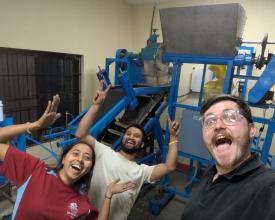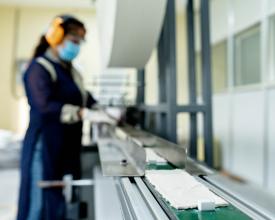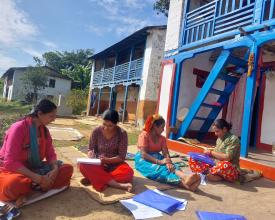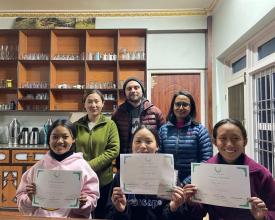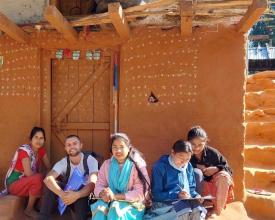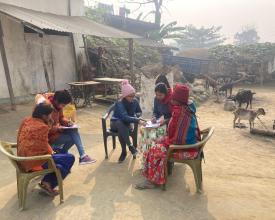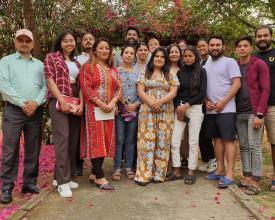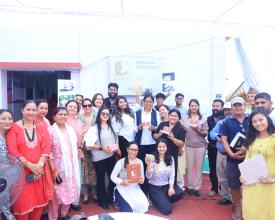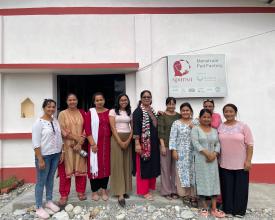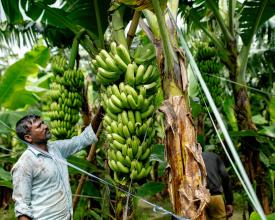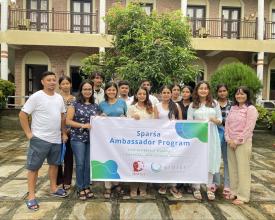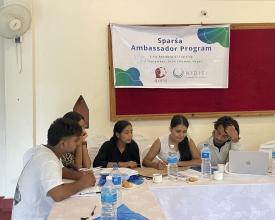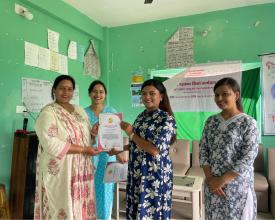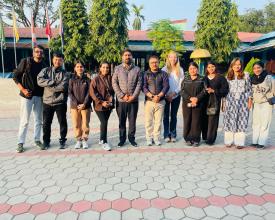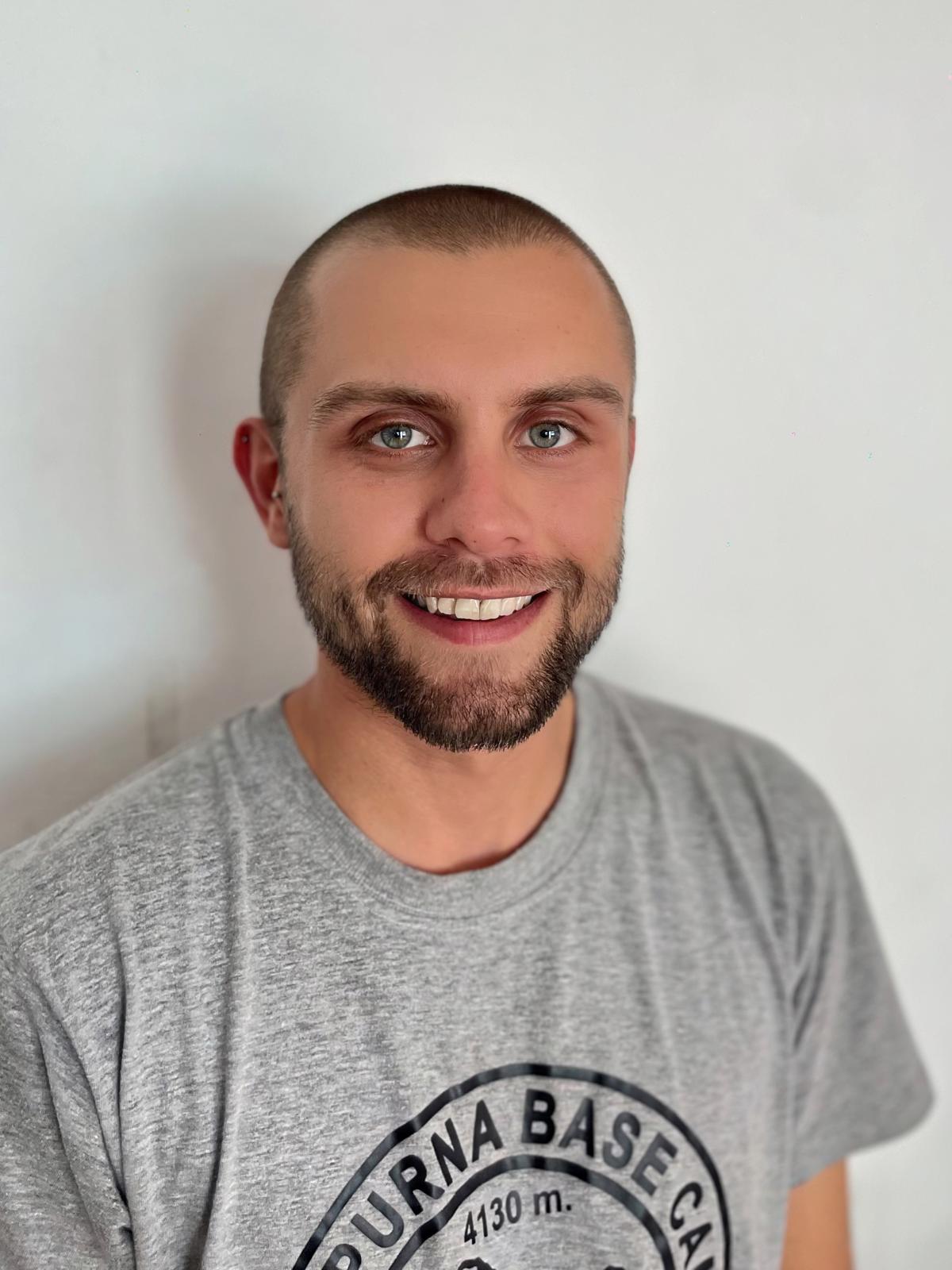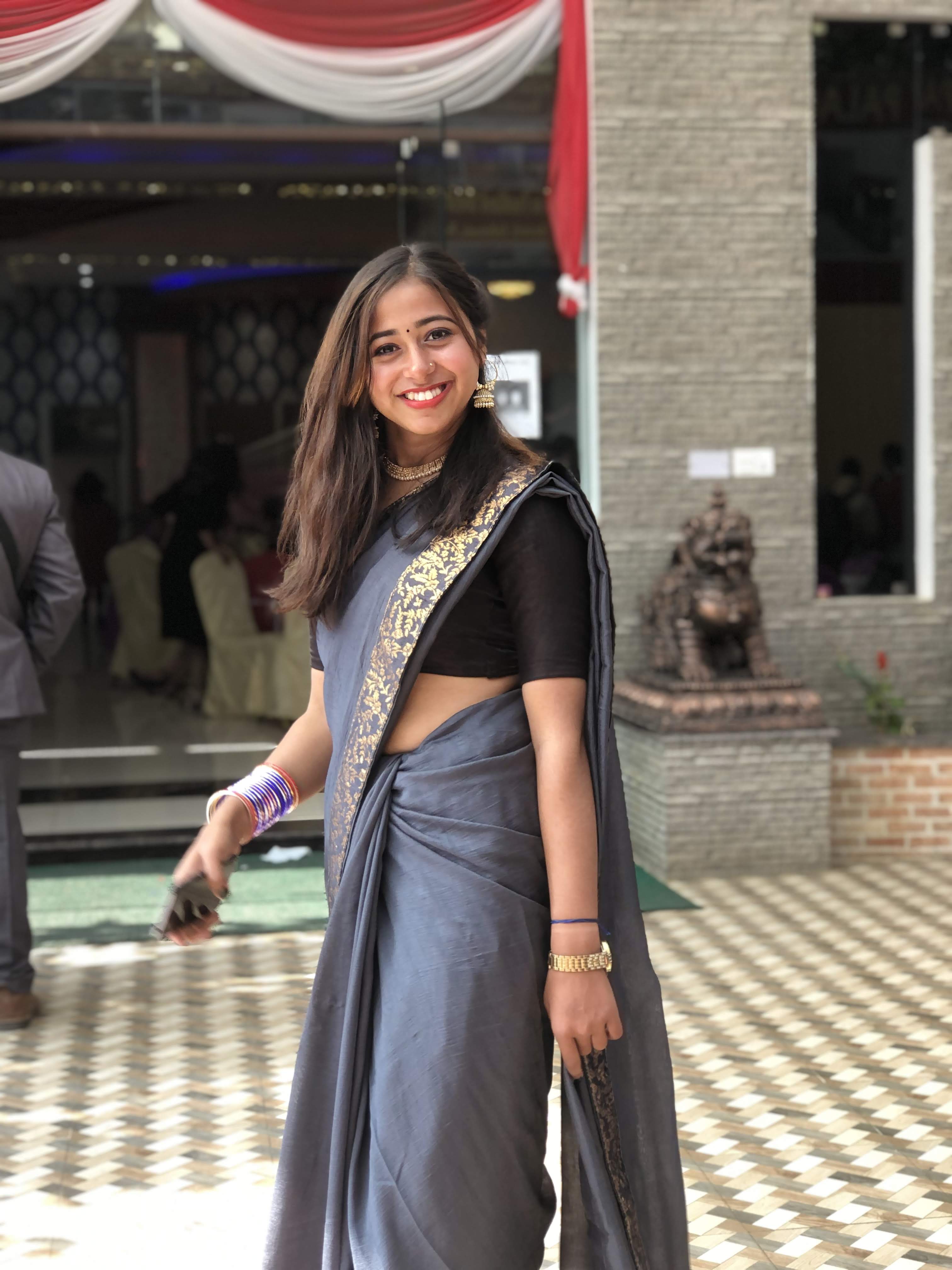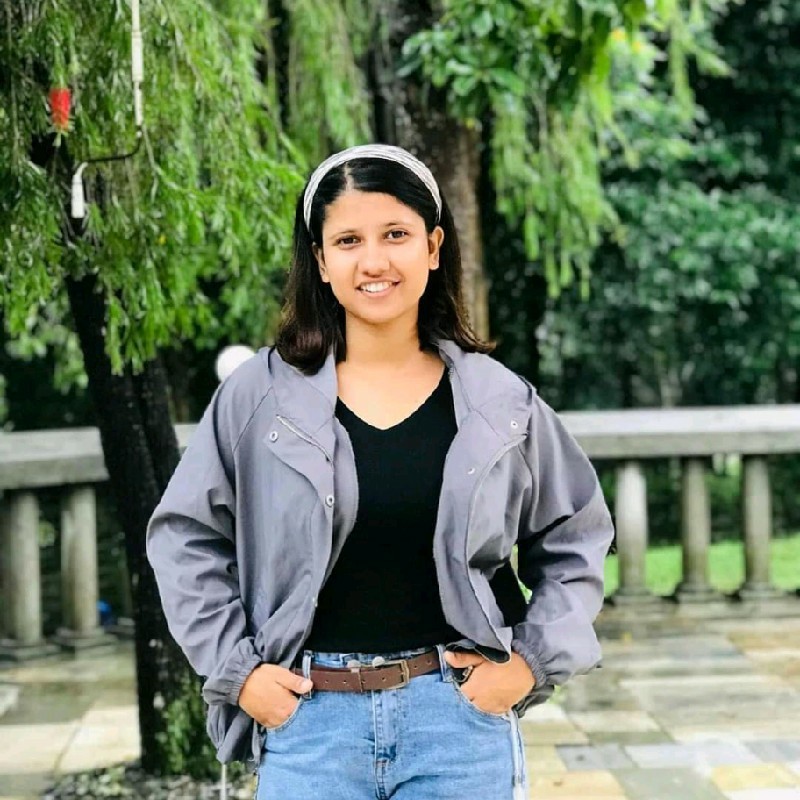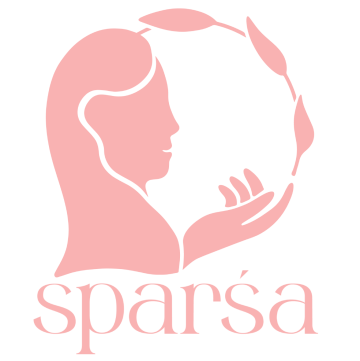
Sparśa: A Social and Environmental Business Model for Compostable Menstrual Pads Production in Nepal
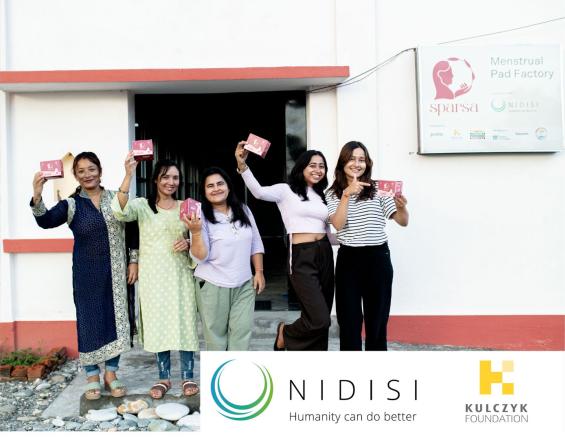
Sparśa is a women-led Nepali social business turning agricultural byproducts into fully compostable menstrual pads, addressing poverty, stigma, gender inequality, and plastic pollution. By sourcing banana fibers locally and applying innovative engineering, Sparśa delivers safe, affordable, plastic-free pads while creating dignified green jobs for women. Profits are reinvested into menstrual health education, ensuring lasting community impact. The enterprise integrates user-centered research, quality testing, and market strategies to guarantee comfort, safety, and cultural acceptance. Its Ambassador Program empowers youth and adults to challenge taboos and foster dialogue. Beyond Nepal, Sparśa serves as a pilot for replication in other regions and with diverse fiber plants, sharing open knowledge through global cooperation. By combining innovation, empowerment, and sustainability, Sparśa advances menstrual health and a plastic-free future, with local partnerships already active across the Global South.
Context
Challenges addressed
Technical & economic: Designing reliable pad-making machines in Nepal proved far more complex than expected, requiring repeated redesigns and long delays. Importing raw materials, such as viscose, was hindered by bureaucracy and unreliable suppliers, disrupting R&D. Locally produced pads also face competition from inexpensive plastic imports, making affordability and market entry challenging.
Social: Menstrual stigma and skepticism toward new products make it challenging to build trust. Continuous awareness and dialogue are necessary to normalize conversations and encourage the use of compostable pads.
Environmental: Ensuring pads remain fully compostable without hidden plastics, while still meeting comfort and hygiene standards, demands strict quality control.
Location
Process
Summary of the process
The six building blocks of Sparśa connect into a circular chain that addresses menstrual health, environmental sustainability, and gender equity. Work begins in Triveni with sustainable fiber sourcing and processing, where banana trunks are collected from farmers, agro-waste is removed, and composting practices are introduced. The fibers are then transformed in Bharatpur through engineering and pad production, using machinery designed and built locally. This feeds into user-centered R&D and quality assurance, where prototypes are tested with women and girls and validated by certified laboratories to ensure comfort, safety, and compostability.
Once a reliable product exists, the business model and market access strategy structure Sparśa as a women-led enterprise, aimed at creating green jobs and reinvesting profits into awareness. To ensure acceptance, education ,and community engagement through the Ambassador Program normalizes menstruation and reduces stigma in schools and communities. Finally, the Journey of Community Building shares these lessons globally via the Blueprint Project, enabling replication across geographies and fiber plants, and multiplying impact beyond Nepal.
Building Blocks
Sustainable Fiber Sourcing & Processing
Banana plants are harvested for fruit only once, leaving large trunks behind. Traditionally, these are left to rot or burned, adding to pollution and waste. Sparśa has turned this challenge into an opportunity: we partner with farmers in Susta municipality, Nepal, to collect trunks as raw material for our compostable pads. Through a simple agreement, farmers provide trunks free of charge, and in return, Sparśa removes the agro-waste from their plantations and trains farmers in making bio-compost from remaining residues. This improves soil fertility, reduces open burning, and creates cleaner plantations — while securing a steady flow of fibers for pad production.
This step demonstrates how an agricultural byproduct can be reintegrated into a value chain that benefits health, the environment, and livelihoods, while creating a replicable model for circular farming. The knowledge collected here is not limited to menstrual pads; the same sourcing and processing techniques can be adapted to produce other fiber-based products, such as textiles, packaging, or handicrafts, thereby broadening opportunities for local green industries in low- and middle-income countries.
The details of fiber sourcing, drying, and preparation will be presented in a dedicated PANORAMA solution on ‘Sustainable Fiber Processing’ (Scheduled to be published for November 2025). The next stage — how fibers are transformed into banana paper with machinery designed and built for our own factory — will be shared in PANORAMA solution ‘From Natural Fibre to Paper’ (also due November 2025). Together, these solutions document the earliest stages of Sparśa’s pad production process and make them open source for replication.
Enabling factors
- Farmer partnerships: Agreements based on shared value (waste removal + composting knowledge in exchange for free trunks) ensured long-term cooperation.
- Local context advantage: Susta (Nawalparasi district) has extensive banana plantations, creating a natural hub for a steady biomass supply.
- Community trust: Transparent collaboration and visible environmental benefits (cleaner fields, soil enrichment) built farmer buy-in.
- Adaptable processes: Fiber extraction and drying methods are simple, low-cost, and can be adjusted to other fiber plants beyond banana.
Lesson learned
- Shared value is key: Farmers engage only when agreements benefit them as much as us — composting training and cleaner plantations proved as important as financial incentives.
- Standardization is essential: Fiber quality varies with weather and handling; without consistent drying and storage protocols, downstream production suffers.
- Plan for seasonality: Banana harvesting is cyclical; reliable supply requires forward planning, storage, and diversification of fiber sources.
- Transferability matters: These practices are not only useful for pads — they are relevant for anyone working with natural fibers, from packaging to textiles.
- Donor/partner insight: Early investment in waste valorization creates high social, environmental, and economic returns, while laying the groundwork for replication in other countries.
Engineering & Pad Production
Once banana fibers are prepared, the next step is to transform them into banana paper and menstrual pads. Sparśa developed and built its own production line in Nepal — combining machinery for fiber pulping, pressing, drying, paper-making, and pad assembly. Because some of this equipment did not exist on the market, our team designed machines from scratch in collaboration with skilled workshops in Kathmandu, adapting them for small-scale, cost-effective production. Locally designed paper-making equipment and pad-shaping machines were prototyped, tested, and refined in real factory conditions.
This engineering innovation is at the heart of Sparśa’s model: it proves that advanced machinery can be developed locally, reducing dependency on costly imports and strengthening Nepal’s industrial capacity. From paper moulds and deckles to pad-shaping machines, each design was prototyped, tested, and refined in real factory conditions. By making these designs openly available, we ensure that other initiatives worldwide can replicate production using locally sourced fibers.
This step is already showcased in PANORAMA solution ‘Engineering for the Production of Compostable Pads’, where readers can follow the full workflow from banana paper to absorbent core to finished pad. Further technical details, including CAD files and full documentation of the ‘From Natural Fibre to Paper: A Practical Solution Centered on Equipment Design for Small-Scale Production’ will be provided as a separate PANORAMA solution page to be published by November 2025, offering practical, step-by-step guidance for replicating both equipment design and small-scale production processes.
Enabling factors
- Local engineering partnerships: Close collaboration with leading Kathmandu workshops enabled machine design, fabrication, and troubleshooting directly on-site.
- Hands-on R&D culture: Our team embraced prototyping and iteration, testing each machine in real factory conditions.
- Open-source mindset: Commitment to documenting CAD files, SOPs, and lessons learned ensures global replicability.
- Integration into production chain: Machines were designed not as stand-alone units but to fit into a step-by-step workflow — from fiber to paper to pad.
Lesson learned
- Innovation takes longer than expected: Building pad-making machines locally required repeated redesigns and months of adjustments.
- Context matters: Designing for Nepal meant accounting for limited spare parts and infrastructure — machines had to be robust and maintainable locally.
- Iterative testing is essential: Every adjustment in machinery affects product quality; without continuous user feedback and lab verification, the pad would not meet standards.
- Capacity building as a legacy: Investing in local engineering strengthens future resilience — Nepalese workshops can now replicate and improve these designs independently.
- Donor/partner insight: Funding machinery development is not just about producing pads; it creates transferable know-how, empowering entrepreneurs in menstrual health, packaging, and other fiber-based industries across the Global South.
User-Centered R&D & Product Quality
At the core of Sparśa’s innovation is a commitment to listening to users. A nationwide survey of 820 women and girls provided critical insights into menstrual practices, preferences, and unmet needs. This research guided the first pad prototypes and shaped every design decision — from absorbency and comfort to cultural acceptance and compostability. Each prototype underwent testing in both laboratory conditions and community settings, striking a balance between hygiene standards and user expectations.
To ensure scientific credibility, Sparśa established its own testing protocols and partnered with certified laboratories to validate the safety and performance of its products. Results were documented and openly shared, supporting not only our product development but also providing evidence-based knowledge for NGOs, policymakers, and social enterprises working in the field of menstrual health. This user-driven, research-based approach is documented in detail in Defining a Good Menstrual Pad: A User-Centered R&D Process in Nepal, which explains how field research, prototyping, and quality assurance intersect to define standards for sustainable menstrual products.
Enabling factors
- Community trust: Strong relationships with local schools and women’s groups allowed open conversations about menstruation.
- Scientific partnerships: Collaborations with certified labs and academic partners ensured compliance with hygiene standards.
- Iterative design process: Incorporating direct user feedback at each stage improved acceptance and credibility.
- Transparency: Publishing research and findings allowed other actors to apply knowledge to their own contexts.
Lesson learned
- Users know best: Designing with, not for, women and girls ensures real-world acceptance.
- Feedback never stops: Even once a pad design is finalized, continuous verification through user feedback is essential to maintain trust and quality.
- Evidence strengthens advocacy: Data from user research supports NGOs, governments, and donors in making informed decisions about menstrual health.
- Donor/partner insight: Supporting R&D is not only about one product — it creates a body of knowledge that multiplies impact across the sector.
Business Model & Market Access
Sparśa is designed as a women-led, non-profit social business that integrates environmental protection, menstrual equity, and economic empowerment. The enterprise is aimed at creating ~16 direct green jobs for women in both rural fiber processing and urban pad production. Its structure ensures that decision-making power remains with local women, embedding gender justice into the heart of the business.
A defining feature of the model is the reinvestment of profits into education and awareness campaigns, linking financial performance directly with social impact. By doing so, Sparśa builds a sustainable cycle in which production funds awareness, awareness drives acceptance, and acceptance supports market growth. At the same time, the enterprise faces the challenge of competing with cheap, plastic-based imports — which dominate 98% of the Nepali market — making financial planning, partnerships, and strategic positioning essential.
This block connects directly to the published PANORAMA solution Sparśa Business Model: Gender-Responsive Entrepreneurship and Market Access, which delves deeper into the practical aspects of building a social enterprise in Nepal. It includes lessons on forming strategic partnerships with government bodies and NGOs, financial planning and reinvestment strategies, setting up production units, and navigating market entry in an environment dominated by cheap plastic imports.
Enabling factors
- Women’s leadership ensures community trust and authentic gender empowerment.
- Integrated social model reinvests profits into awareness and education campaigns.
- Strategic partnerships with government and NGOs enable early distribution and trust-building.
- Financial planning and market entry strategies ensure sustainability while balancing affordability with eco-standards.
Lesson learned
- Social and business goals must align: reinvesting profits into awareness creates lasting community impact.
- Competing with imports is difficult: eco-pads must meet both price and quality expectations to gain acceptance.
- Building trust takes time: partnerships with NGOs and municipalities require consistent engagement and transparency.
- Donor/partner insight: This model is more than a factory — it is a blueprint for gender-responsive, financially sustainable social businesses in low- and middle-income countries.
Education & Community Engagement
Compostable pads alone are not enough to create change — awareness and dialogue must go hand in hand with product innovation. To address this, Sparśa launched the Ambassador Program, a youth-led initiative that trains young women and men from local communities to become educators and advocates for menstrual health. After intensive training in SRHR, facilitation, and leadership, Ambassadors design and deliver sessions tailored to schools and community groups, using storytelling, games, scientific explanations, and product demonstrations to make menstruation a topic that can be spoken about openly.
In its first year of operation, the program trained 20 Ambassadors who reached 70+ schools, 7,500 students, and 1,500 adults with stigma-reduction sessions. Both boys and girls are included in school workshops to normalize menstruation and build empathy, while adult sessions focus on myth-busting and dialogue. Beyond knowledge transfer, Ambassadors gain leadership, public speaking, and facilitation skills that strengthen their own futures.
The initiative is described in detail in the published PANORAMA solution Sparśa Ambassador Program: Youth-Led Menstrual Health Education and Stigma Reduction in Nepal. That solution provides practical insights for replication, explaining how to recruit and train Ambassadors from within their own communities, how to engage schools and community leaders to secure legitimacy, and how to design education that is age-appropriate for students while also creating dialogue-based sessions for adults. It also shares lessons on sustaining motivation, offering mentorship, and building long-term community trust.
Enabling factors
- Community-based recruitment: Selecting Ambassadors from their own areas ensures cultural and linguistic relevance.
- Institutional partnerships: Support from schools, NGOs, and municipalities builds legitimacy and reach.
- Inclusive approach: Sessions target both boys and girls, as well as parents and community leaders.
- Capacity building: Ambassadors gain professional skills in leadership, facilitation, and themes such as Sexual and Reproductive Health and Rights (SRHR).
Lesson learned
- Pads need awareness to succeed: Products alone cannot dismantle stigma; education and dialogue are vital.
- Youth as change-makers: Local young people are powerful agents in shifting norms when given the right training.
- Continuous support is essential: Mentorship, refresher trainings, and peer networks keep Ambassadors motivated.
- Donor/partner insight: Supporting education programs multiplies the impact of pad distribution, creating cultural acceptance, reducing stigma, and fostering future leaders.
Community Building – Creating a Globally Adaptable Blueprint Model for Fibre Pad Manufacturing
While Sparśa in Nepal serves as a pilot enterprise, NIDISI’s ambition reaches far beyond one country. Years of networking with practitioners, academics, social entrepreneurs, and NGOs showed us that many projects across the Global South are working with natural fibres — banana, sisal, water hyacinth, bamboo — yet most face similar challenges: how to process fibres efficiently, ensure product quality, secure market access, and build financially sustainable social businesses. To address this, we launched the Sparśa Blueprint Project, which creates a global community of knowledge sharing for compostable pad manufacturing.
The Blueprint is where Sparśa’s technical expertise, R&D, and social business lessons are opened up for replication. It documents machinery CAD files, sourcing strategies, financial planning models, and outreach approaches, but also creates space for dialogue and co-creation. Connecting projects across the globe enables local innovators to learn from each other and adapt the model to their own contexts and fibre plants.
First building block of Journey of Community Building: Creating a Globally Adaptable Blueprint Model for Fibre Pad Manufacturing — will be published on the PANORAMA platform in September 2025, and a full solution page will follow in November 2025. There, we will share the accumulated experience of years of building networks across continents, including insights from collaborations with grassroots entrepreneurs, academic partners such as Stanford University’s Prakash Lab and LGP2 from the Grenoble INP-Pagora, NGOs, and local governments. This scaling of our project will serve as the gateway for replication, helping others create their own fibre-based pad enterprises.
Enabling factors
- Strong global partnerships: Years of networking and collaboration with practitioners across the world, building trust and connections.
- Open-source commitment: All knowledge (CADs, SOPs, lessons) will be shared openly to reduce barriers to entry.
- Donor support and legitimacy: Backing from institutions like the Kulczyk Foundation, GIZ, PANORAMA platform and IUCN strengthens global visibility.
- Community of practice: Practitioners, founders, and academics form a living network, exchanging experience beyond documents.
Lesson learned
- Scaling Sparśa into a globally adaptable model requires open knowledge sharing, adaptation to different fiber plants and markets, and building strong networks across countries.
- Networking is a long-term investment: Building trust across countries and sectors takes years but creates strong foundations for replication.
- Knowledge must be contextual: Designs and business models need adaptation to local fibres, markets, and cultural norms.
- Global collaboration fuels innovation: By connecting projects, new solutions emerge that no single initiative could achieve alone.
- Donor/partner insight: Supporting the Blueprint is not just supporting one project — it is investing in a scalable, global movement for menstrual equity and plastic-free products.
Impacts
- Women-led enterprise: Nepal’s first women-led social business producing fully compostable pads from banana fibers. Long-term goal: ~3,500 pads/day, providing a sustainable alternative to 98% plastic-based imports.
- Green jobs: Creates ~16 dignified jobs for women in rural fiber processing and urban pad production, embedding gender equity across agricultural and industrial work.
- Plastic reduction: At full capacity, ~7 tons of plastic annually are kept from Nepali markets, cutting waste streams and reducing microplastic exposure in communities.
- Support for farmers: Collecting banana trunks and training in composting reduces open burning, restores soil fertility, and transforms waste into added crop value.
- User-centered design: Guided by insights from 820+ women and girls, pads meet real needs. Findings are published to inform NGOs, social enterprises, and policymakers.
- Education & awareness: The Sparśa Ambassador Program trained 10 youth leaders who reached 7,500 students and 1,500 adults with stigma-reduction and menstrual health education.
- Technical innovation: Locally engineered fiber and pad-making machines reduce reliance on imports, build Nepal’s industrial capacity, and showcase circular economy innovation.
- Global replication: Partnerships in Nepal, Kenya, and beyond position Sparśa as pilot for the open-source Blueprint Project, enabling replication across regions and fiber plants.
Beneficiaries
Direct: include women employed in pad and fiber production, banana farmers trained in composting, youth Ambassadors, and women and girls accessing pads.
Indirect: include families, schools, NGOs, municipalities, and global partners via the Blueprint Project.
Sustainable Development Goals
Story
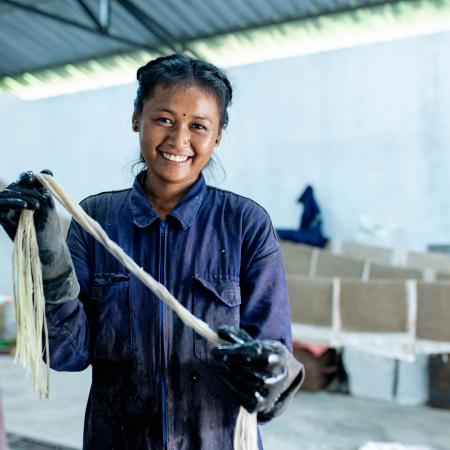
Kalpana used to rely on daily wage farm work, going door-to-door to ask farmers if they had jobs for her. The work was irregular, and even when she found it, payment was never guaranteed — sometimes she waited days to receive her wages. This constant uncertainty made it extremely difficult to support her family and plan for the future.
Everything changed when Kalpana became a fiber factory operator with Sparśa. For the first time, she receives a regular monthly salary, giving her stability and dignity. With this steady income, she has been able to invest in the construction of her family home, ensuring her children have a safe place to grow up. She now manages her household confidently and no longer lives with the daily stress of financial insecurity.
In her village, where women and girls have very limited opportunities to earn a living, Kalpana’s journey has become a source of pride and inspiration. She shows that when women gain access to dignified, stable employment, they can not only transform their own lives but also inspire others to believe in new possibilities.

